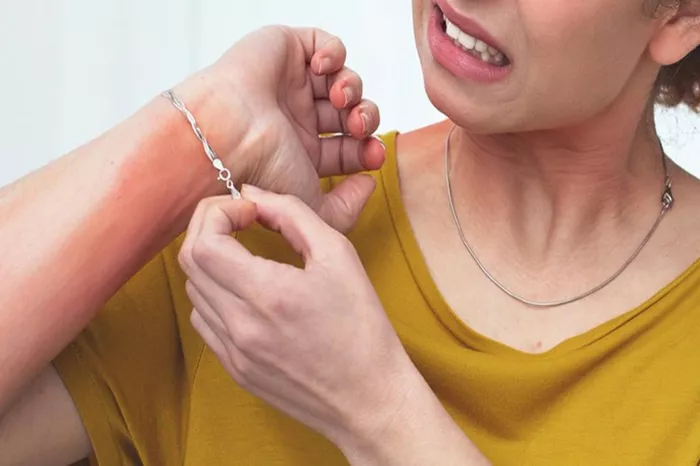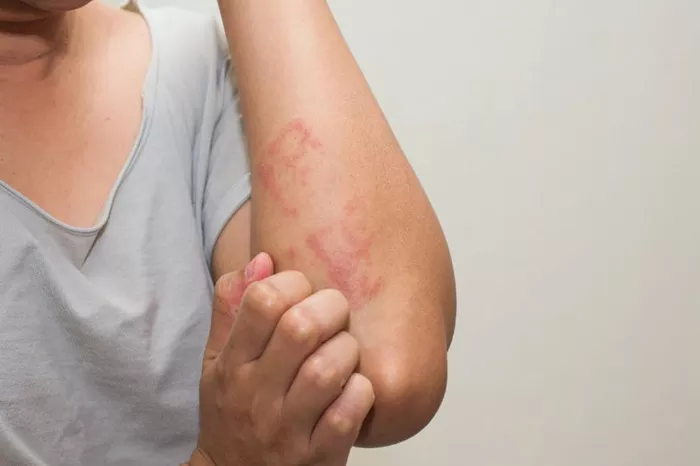Allergic reactions to jewelry, commonly known as contact dermatitis, can be uncomfortable and unsightly. Whether it’s a ring, necklace, or earrings, certain metals and materials in jewelry can cause irritation to the skin, leading to redness, itching, swelling, and even blisters. If you’re experiencing these symptoms, it’s essential to understand how to treat and manage jewelry allergic reactions effectively.
Understanding Jewelry Allergic Reactions
Before delving into treatment options, it’s crucial to comprehend what causes allergic reactions to jewelry. Most reactions occur due to contact with metals such as nickel, cobalt, and chromium found in many types of jewelry, including costume jewelry and even some precious metals like white gold. These metals can trigger an immune response in sensitive individuals, leading to skin irritation and inflammation.
Additionally, certain individuals may develop allergies to other materials commonly found in jewelry, such as certain plastics, adhesives, or coatings used to enhance the appearance of pieces. Identifying the specific allergen causing the reaction is key to preventing future occurrences.
Immediate Treatment Measures
When experiencing a jewelry allergic reaction, it’s essential to take immediate steps to alleviate discomfort and prevent further irritation. Here are some initial treatment measures to consider:
Remove the Offending Jewelry: The first and most crucial step is to remove the jewelry causing the reaction. Continuing to wear the piece will only exacerbate the symptoms and prolong the healing process.
Cleanse the Affected Area: Gently wash the affected area with mild soap and water to remove any residual allergens, dirt, or sweat. Avoid using harsh or scented soaps, as these can further irritate the skin.
Apply a Cold Compress: To reduce inflammation and soothe itching, apply a cold compress or ice pack wrapped in a clean cloth to the affected area for 10-15 minutes. This can help alleviate discomfort and minimize swelling.
Topical Anti-inflammatory Creams: Over-the-counter hydrocortisone cream or calamine lotion can help relieve itching and inflammation associated with jewelry allergic reactions. Apply a thin layer to the affected area following cleansing and drying.
Take Oral Antihistamines: If itching and discomfort persist, consider taking an oral antihistamine such as diphenhydramine (Benadryl) to help alleviate symptoms. Be sure to follow the dosage instructions and consult with a healthcare professional if you have any underlying medical conditions or are taking other medications.
Long-term Management Strategies
While immediate treatment measures can provide relief from jewelry allergic reactions, implementing long-term management strategies is essential to prevent future occurrences. Here are some steps you can take to minimize the risk of allergic reactions:
Choose Hypoallergenic Jewelry: Opt for jewelry made from hypoallergenic materials such as surgical-grade stainless steel, titanium, or platinum, which are less likely to cause allergic reactions. Avoid nickel, cobalt, and other common allergens found in certain metals.
Consider Alternative Materials: If you have a known allergy to specific metals, explore jewelry options made from alternative materials such as wood, glass, silicone, or ceramic. These materials are less likely to trigger allergic reactions and can offer stylish alternatives to traditional metal jewelry.
Protective Coatings: Consider applying a clear nail polish or specialized jewelry coating to metal pieces to create a barrier between the skin and the metal surface. This can help prevent direct contact with allergenic metals and reduce the risk of allergic reactions.
Limit Wear Time: If you have sensitive skin or a known allergy to certain metals, avoid wearing jewelry for extended periods, especially during activities that may cause sweating or prolonged exposure to moisture. Remove jewelry before exercising, swimming, or showering to minimize the risk of irritation.
Maintain Proper Hygiene: Keep jewelry clean and dry by regularly cleaning it with mild soap and water and patting it dry with a soft cloth. Avoid wearing dirty or tarnished jewelry, as this can increase the likelihood of skin irritation and allergic reactions.
Consult a Dermatologist: If you frequently experience allergic reactions to jewelry or have persistent symptoms despite taking preventive measures, consult a dermatologist for further evaluation and personalized recommendations. They can perform patch testing to identify specific allergens and provide tailored treatment options.
Conclusion
Jewelry allergic reactions can be bothersome and uncomfortable, but with proper understanding and proactive measures, they can be effectively managed and minimized. By identifying the allergens triggering your reactions, choosing hypoallergenic materials, and implementing preventive strategies, you can enjoy wearing jewelry without compromising your skin’s health. Remember to seek medical advice if you experience severe or persistent symptoms to ensure proper diagnosis and treatment.
[inline_related_posts title=”You Might Be Interested In” title_align=”left” style=”list” number=”6″ align=”none” ids=”6023,6034,6044″ by=”categories” orderby=”rand” order=”DESC” hide_thumb=”no” thumb_right=”no” views=”no” date=”yes” grid_columns=”2″ post_type=”” tax=””]

































